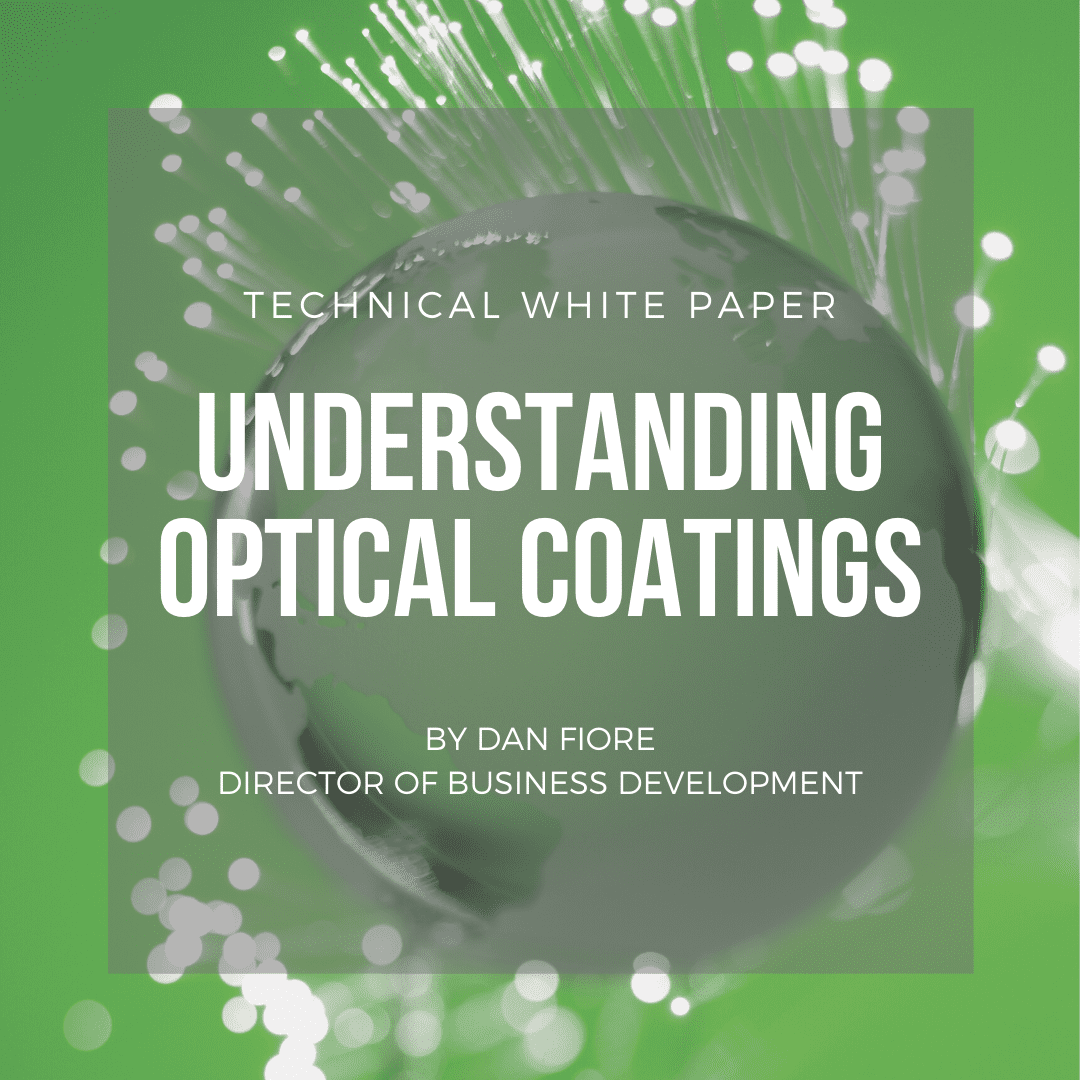Optical coatings and the coating process itself are often the last thing engineers consider when designing both simple and complex optical systems for prototype and wide-scale manufacturing. Our hope with this paper is to help and educate our future customers on the multiple types of optical coatings and some of their unique proprieties.
Anti-reflection
Anti-reflection films are used to maximize light transmission while increasing contrast and eliminating ghost images. Typically, these coatings are quite robust when tested for abrasion and environmental resistance. Most transmissive optics have some type of anti-reflection thin film on at least a single surface, but in most cases transmissive optics will have a dual surface anti-reflection thin film in order to optimize their performance with regards to light transmission and reflection reduction/elimination.
Highly-reflective
Highly-reflective thin films are also known as mirrors and are intended to maximize the reflectance levels of an optic in either a very specific wavelength range or across a wide spectrum range.
Beamsplitter
Beamsplitter thin films literally cut light waves into many specific beams. These thin films are being used heavily in AR/VR applications as well as heads up automotive displays. Beamsplitter thin films are highly customizable for both polymeric and glass optical applications.
Filter
Filter thin films can reduce or enhance the characteristics of light at specific wavelengths. Depending on the application, a filter coating can reflect, absorb, or transmit light.
Transparent Conductive
Transparent Conductive thin films conduct electricity conformally over the surface of an optic and are used in multiple applications such as electro-magnetic interference (EMI) , radio frequency interference (RFI), electro static discharge (ESD), heater panels for displays used in adverse weather conditions, and touch screens.
Abrasion/Chemical Resistant
Abrasion and chemically resistive thin films are used on glass and plastic and can be applied via multiple methods. These coatings protect the raw optical material from handling, environment and mechanical abrasion. These coatings may also protect the optical surface from chemicals used in specific applications.
Absorptive
Absorptive or “black” thin films provide suppression of stray light in visible (VIS), Short Wave Infrared (SWIR) and Mid Wave Infrared (MWIR) wavelengths.






